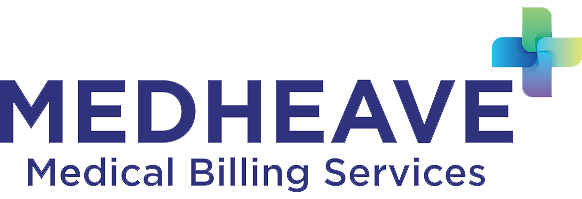According to Pat Palmer, founder and CEO of Medical Billing Advocates of America, three out of four medical bills have errors in them. These errors could be for multiple reasons. This blog will highlight all the major reasons for medical billing mistakes and the best practices to avoid them.
Common Medical Billing Mistakes
and Their Impact
Errors related to Patient Information
Accurate patient information is the main ingredient for successful claim submission. Any minor error in the demographic information can lead to claim denial or rejection. Errors can occur at three different levels, as mentioned below:
Incomplete Patient Demographic
Incomplete patient demographics, such as missing addresses and contact numbers, can significantly impact revenue cycle management for a number of reasons, including:
- The reimbursement process is slowed down because, without complete information about the patient, communication between the insurance company and the provider is not feasible. This directly hits the claim process.
- Without the complete information of the patient, the insurance company can pay the wrong healthcare provider. This results in confusion among all the parties.
Error in Insurance company information
Incomplete or incorrect insurance company information, such as coverage details, directly impacts the reimbursement process, such as:
- Incorrect information about the payer policy halts the claim process and leads to delays in payment. The healthcare organization is reluctant to work due to financial aspects of the organization.
- Insurance-related issues are quite time-consuming and increase the administrative work of the healthcare staff. The staff is diverted from their priority duty, i.e., patient care.
Misspelled Names and Incorrect Date of Birth
Misspelled names and incorrect dates of birth are quite minor errors but have a great impact on the destiny of the claim. The consequences include:
- Insurance companies will definitely reject the claim as the patient information does not match the information they have in their system. This could be a great financial loss for the healthcare provider.
- As the identity of the patient is not confirmed, the patient data is not protected. This could raise serious concerns about the security of patient information.
Do you Know?
The annual growth rate of medical billing outsourcing is 11.5%. The market size has grown from $13.56 billion to $15.12 billion from 2022 to 2023.
Errors related to Coding
Accurate medical coding is the key to a successful medical billing process. Proper coding ensures transparency, compliance, and timely reimbursement. Any error in coding can cause issues in claim submission, which in turn results in financial loss for the healthcare organization. There are different types of coding errors listed below:
Upcoding and its Consequences
Upcoding is basically when the provider submits more codes than the services rendered to the patient. The consequences include:
- Upcoding is a fraudulent act done intentionally to get more revenue. This leads to audits and investigations. The healthcare facility is exposed to legal and financial risk, resulting in penalties and fines.
- Due to upcoding, patients and insurance companies pay more than usual. This directly raises the healthcare price.
Downcoding and its consequences
Downcoding is when the provider submits fewer codes than the services rendered to the patient. The consequences include:
- Downcoding directly affects the financial aspect of the healthcare organization. A revenue loss for healthcare providers is obvious.
- It can also cause disputes with the insurance companies, leading to delays in reimbursement.
Outdated and Mismatched Codes
Outdated and mismatched codes can have some serious repercussions on the medical billing process.
- Outdated codes do not match the guidelines of the regulatory bodies. So, the insurance companies deny the claims firsthand.
- Mismatched codes for the diagnosis and procedures are the error that only results in claim denial or rejection.
- Outdated codes mean the healthcare provider is not compliant with the rules and regulations of the regulatory bodies. This results in audits and fines for the healthcare facility.
Do you Know?
According to a recent report from the American Academy of Professional Coders (AAPC), coding errors result in 80% of claim denials.
Duplicate Billing
Duplicate billing is when the healthcare provider bills for the same service twice or more. It can happen due to any administrative error or any provider doing it intentionally. There are two types that come under this heading:
Unintentional Duplicate Billing
In unintentional duplicate billing, the provider hasn’t done it with any fraudulent thoughts in his mind. He has no idea about the cause of the error. The insurance company and patient are charged twice as much. This puts a financial burden on both parties, which could result in confusion and disputes.
Intentional Duplicate Billing
Intentional duplicate billing is when the provider deliberately submits multiple claims for the same service rendered to the patient. The sole purpose of the provider is financial gain. This carries both legal and ethical violations, and the provider could end up with penalties, fines, and imprisonment.
Do you Know?
Frauds such as intentional duplication of the billing result in a cost of 10% of the total expenditure of the healthcare facility.
Failure to Verify Insurance Eligibility
Failure to verify insurance eligibility can have serious repercussions for the medical billing process. Here are some common negative impacts on the revenue cycle listed below:
Financial risk for the healthcare provider
Without verifying the insurance eligibility, the provider has put himself in hot water. He may have provided services to the patient that were actually not covered by the insurance plan. This is the reason he could not receive full payment. Resolving the issues related to insurance eligibility puts an extra administrative burden on the provider, which in turn causes a financial burden.
Negative Patient Experience
Another negative impact is the poor patient experience. An unexpected bill causes a serious burden and stress for the patient. They must be dissatisfied with the services provided to them by the healthcare facility. Many disputes and confusion between the two parties arise at this point.
Errors in Medical Documentation
Any error in the medical documentation can cause claim denials and delays in reimbursement. This could occur due to different reasons:
Incomplete Medical Documentation
When essential information is missed, the billing process is delayed, leading to claim denials and rejections. Incomplete documentation requires extra follow-up. Thus, it increases the administrative burden of the healthcare facility.
Lack of required Descriptions
Medical coding requires minor details to accurately code the diagnosis and procedures of the services provided to the patient. Lack of these descriptions can cause coding errors, which in turn delay reimbursement. This also raises ethical and legal concerns.
Failure to Stay Updated with Regulations
Staying current with the latest updates from regulatory bodies such as HIPAA is quite a daunting task. Keeping up with the ICD-10 is crucial for the medical billing and coding process. ICD-10 is the latest edition of ICD. It covers all the new diseases, diagnoses, procedures, and treatments. Failure to stay current with these codes results in claim denial.
Do you Know?
The new edition of ICD-10 in 2015 has increased the number of rejected claims by 40%.
Solutions and Best Practices to Avoid Medical Billing Mistakes
In order to prevent common medical billing mistakes, some of the proactive tips and practices listed below are:
Conclusion
In conclusion, medical billing is a complex process, and the chances of errors are substantial. Medical billing mistakes have negative impacts on patients as well as on insurance companies. It is directly related to the revenue loss. By implementing best practices, one can surely avoid all these errors and streamline the billing process.



